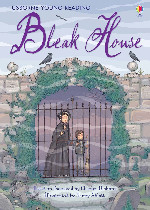
Bleak House is a novel by English author Charles Dickens, first published as a serial between March 1852 and September 1853. The novel has many characters and several sub-plots, and the story is told partly by the novel's heroine, Esther Summerson, and partly by an omniscient narrator. At the centre of Bleak House is a long-running legal case, Jarndyce and Jarndyce, which came about because someone wrote several conflicting wills. Dickens uses this case to satirise the English judicial system. Though the legal profession criticised Dickens' satire as exaggerated, this novel helped support a judicial reform movement, which culminated in the enactment of legal reform in the 1870s.
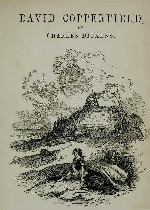
David Copperfield(大卫·科波菲尔) 立即阅读
David Copperfield is the eighth novel by Charles Dickens. The novel's full title is The Personal History, Adventures, Experience and Observation of David Copperfield the Younger of Blunderstone Rookery (Which He Never Meant to Publish on Any Account). It was first published as a serial in 1849–50, and as a book in 1850. The novel features the character David Copperfield, and is written in the first person, as a description of his life until middle age, with his own adventures and the numerous friends and enemies he meets along his way. It is his journey from being an impoverished, neglected child to a successful author.
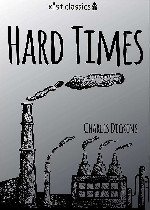
Hard Times is unusual in several ways. It is by far the shortest of Dickens' novels, barely a quarter of the length of those written immediately before and after it. Also, unlike all but one of his other novels, Hard Times has neither a preface nor illustrations. Moreover, it is his only novel not to have scenes set in London. Instead the story is set in the fictitious Victorian industrial Coketown, a generic Northern English mill-town, in some ways similar to Manchester, though smaller. Coketown may be partially based on 19th-century Preston.
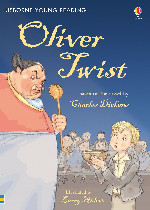
Oliver Twist, de son titre complet en anglais : Oliver Twist, or, The Parish Boy's Progress (Oliver Twist ou Le voyage de l'enfant de la paroisse), l'un des romans les plus universellement connus de Charles Dickens, a été publié en trente-deux feuilletons mensuels dans la revue Bentley's Miscellany, entre février 1837 et avril 1839, juin et octobre 1837 exceptés. L'histoire concerne un orphelin, Oliver Twist, soumis à des privations et des vexations dans l'hospice paroissial (workhouse) où il est né.
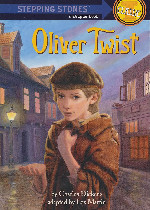
Oliver Twist, or The Parish Boy's Progress, is author Charles Dickens's second novel, and was first published as a serial 1837–39. The story centres on orphan Oliver Twist, born in a workhouse and sold into apprenticeship with an undertaker. After escaping, Twist travels to London, where he meets "The Artful Dodger," a member of a gang of juvenile pickpockets led by the elderly criminal, Fagin. Oliver Twist is notable for its unromantic portrayal by Dickens of criminals and their sordid lives, as well as for exposing the cruel treatment of the many orphans in London in the mid–19th century.
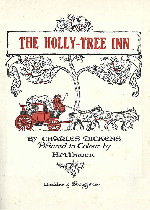
The Holly Tree by Charles Dickens was originally published in 1855, being the Christmas number of Dickens's periodical Household Words. It was so popular that it was then adapted for the stage. It's a collection of short stories by Dickens, Wilkie Collins, William Howitt, Adelaide Anne Procter and Harriet Parr, around the theme of travellers and inns. I liked Collins's and Howlitt's stories the most.It begins with a story by Dickens, The Guest in which a gentleman on his way to Liverpool is snowed in at the Holly-Tree Inn in Yorkshire.
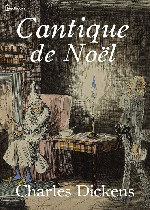
Un soir de Noël, Scrooge, vieil homme d'affaires avare et cupide, a une hallucination en rentrant chez lui : il voit le fantôme de Jacob Marley, son associé décédé des années auparavant, dans le marteau de la porte. Sans s'inquiéter outre mesure de cette « sottise », Scrooge s'apprête à se mettre au lit lorsque la sonnette qui servait autrefois à appeler les domestiques se met à tinter. Or, cette sonnette aboutit à une pièce condamnée depuis bien longtemps, et personne n'a donc pu en tirer la ficelle...
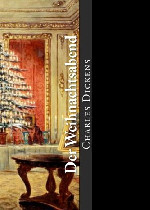
Der Weihnachtsabend: Eine Geistergeschichte(圣诞颂歌) 立即阅读
'Der Weihnachtsabend: Eine Geistergeschichte' (1843) ist eine der bekanntesten Erzählungen von Charles Dickens. Die Erzählung handelt vom Geldverleiher Ebenezer Scrooge, einem alten, grantigen Geizhals, der in einer einzigen Nacht zunächst Besuch von seinem verstorbenen Teilhaber Jacob Marley und dann von drei weiteren Geistern erhält, die ihm schließlich dazu verhelfen, sein Leben zu ändern. Das Buch enthält stark sozialkritische Töne, mit denen Dickens die Missstände im England des 19. Jahrhunderts anprangern wollte.
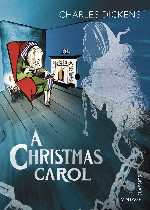
A Christmas Carol in Prose, Being a Ghost-Story of Christmas, commonly known as A Christmas Carol, is a novella by Charles Dickens, first published in London by Chapman & Hall in 1843; the first edition was illustrated by John Leech. A Christmas Carol tells the story of Ebenezer Scrooge, an old miser who is visited by the ghost of his former business partner Jacob Marley and the Ghosts of Christmas Past, Present, and Yet to Come. After their visits Scrooge is transformed into a kinder, gentler man.
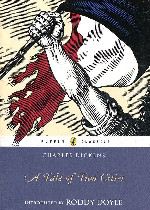
A Tale of Two Cities(双城记) 立即阅读
A Tale of Two Cities (1859) is a novel by Charles Dickens, set in London and Paris before and during the French Revolution. The novel depicts the plight of the French peasantry demoralized by the French aristocracy in the years leading up to the revolution, the corresponding brutality demonstrated by the revolutionaries toward the former aristocrats in the early years of the revolution, and many unflattering social parallels with life in London during the same period. It follows the lives of several characters through these events. A Tale of Two Cities was published in weekly installments from April 1859 to November 1859 in Dickens's new literary periodical titled All the Year Round. All but three of Dickens's previous novels had appeared only as monthly installments.